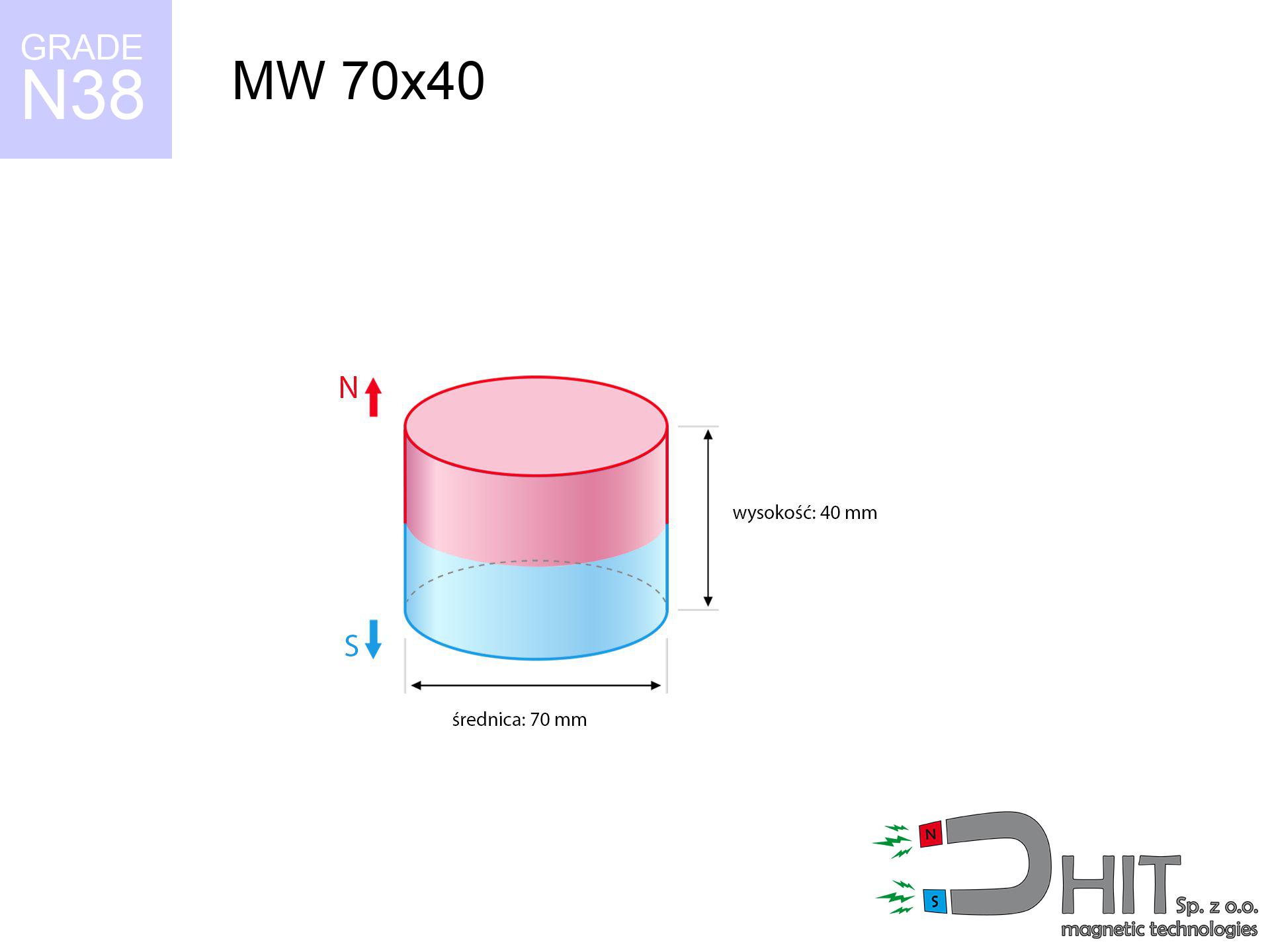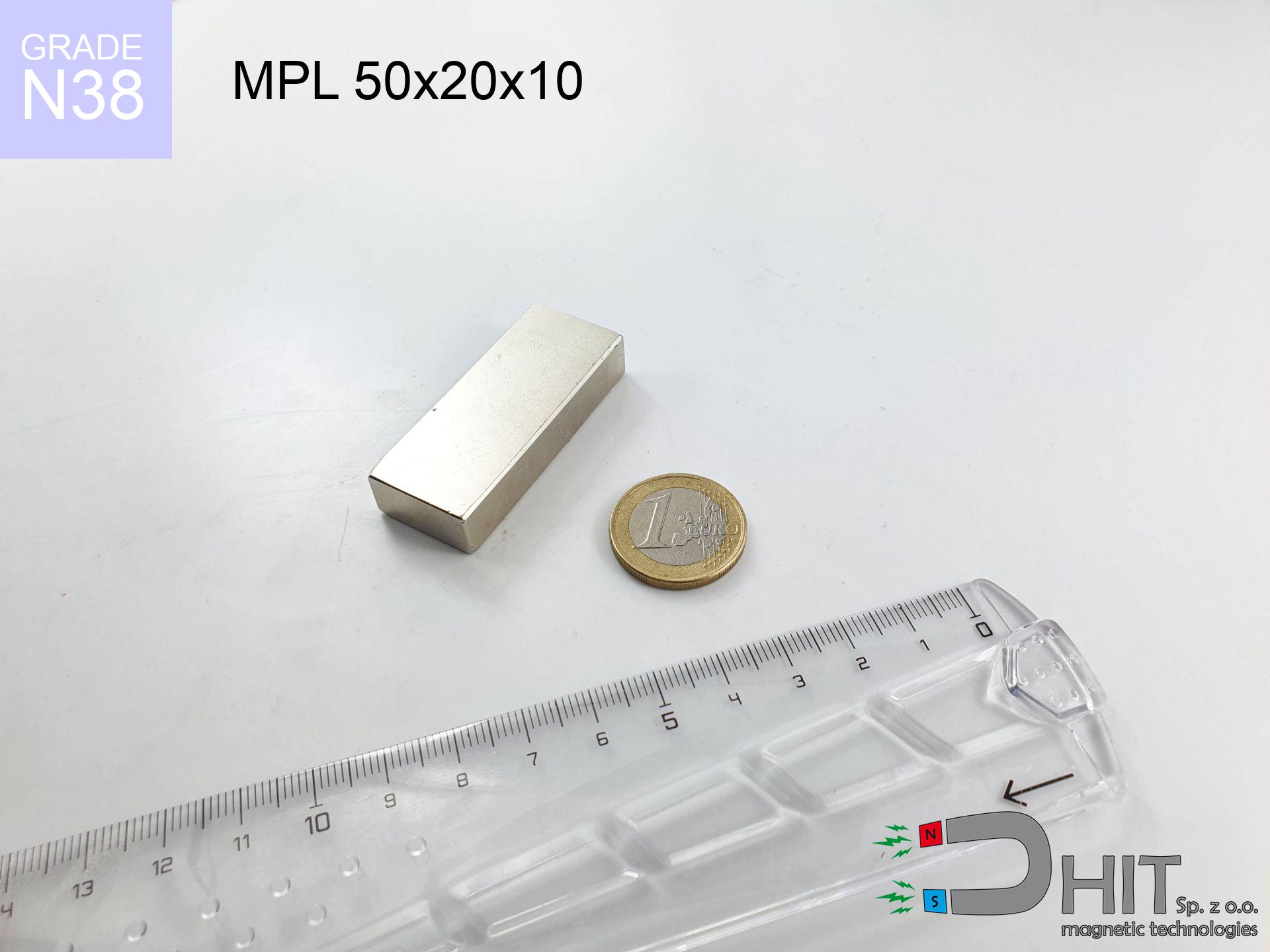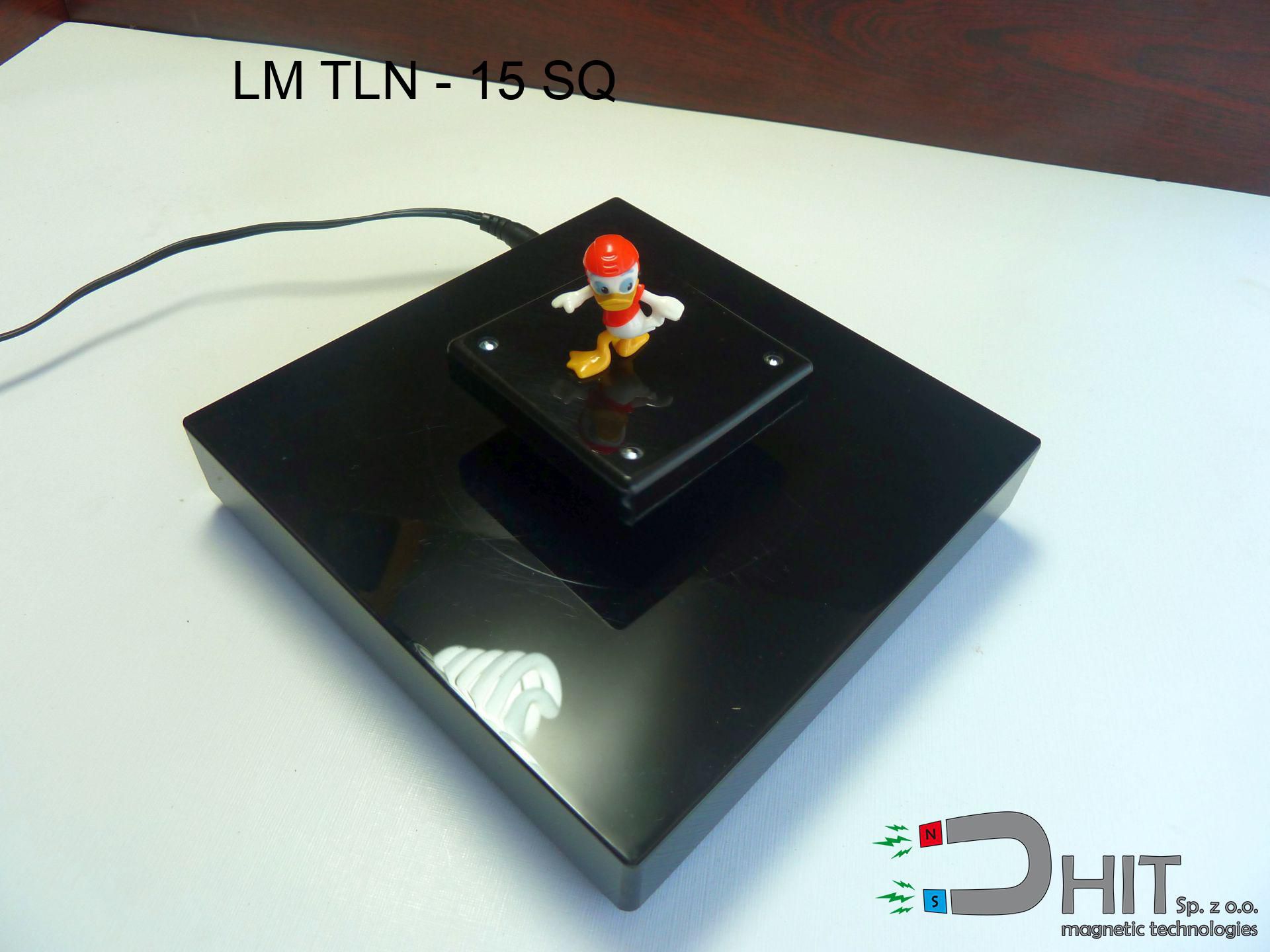MW 70x40 / N38 - cylindrical magnet
cylindrical magnet
Catalog no 010097
GTIN: 5906301810964
Diameter Ø
70 mm [±0,1 mm]
Height
40 mm [±0,1 mm]
Weight
1154.54 g
Magnetization Direction
↑ axial
Load capacity
229.6 kg / 2252.38 N
Magnetic Induction
466.52 mT
Coating
[NiCuNi] Nickel
395.40 ZŁ with VAT / pcs + price for transport
321.46 ZŁ net + 23% VAT / pcs
bulk discounts:
Need more?Want to negotiate?
Pick up the phone and ask
+48 22 499 98 98
alternatively drop us a message by means of
inquiry form
the contact page.
Strength along with shape of a magnet can be verified using our
magnetic mass calculator.
Same-day shipping for orders placed before 14:00.
MW 70x40 / N38 - cylindrical magnet
Specification / characteristics MW 70x40 / N38 - cylindrical magnet
| properties | values |
|---|---|
| Cat. no. | 010097 |
| GTIN | 5906301810964 |
| Production/Distribution | Dhit sp. z o.o. |
| Country of origin | Poland / China / Germany |
| Customs code | 85059029 |
| Diameter Ø | 70 mm [±0,1 mm] |
| Height | 40 mm [±0,1 mm] |
| Weight | 1154.54 g |
| Magnetization Direction | ↑ axial |
| Load capacity ~ ? | 229.6 kg / 2252.38 N |
| Magnetic Induction ~ ? | 466.52 mT |
| Coating | [NiCuNi] Nickel |
| Manufacturing Tolerance | ±0.1 mm |
Magnetic properties of material N38
| properties | values | units |
|---|---|---|
| remenance Br [Min. - Max.] ? | 12.2-12.6 | kGs |
| remenance Br [Min. - Max.] ? | 1220-1260 | T |
| coercivity bHc ? | 10.8-11.5 | kOe |
| coercivity bHc ? | 860-915 | kA/m |
| actual internal force iHc | ≥ 12 | kOe |
| actual internal force iHc | ≥ 955 | kA/m |
| energy density [Min. - Max.] ? | 36-38 | BH max MGOe |
| energy density [Min. - Max.] ? | 287-303 | BH max KJ/m |
| max. temperature ? | ≤ 80 | °C |
Physical properties of sintered neodymium magnets Nd2Fe14B at 20°C
| properties | values | units |
|---|---|---|
| Vickers hardness | ≥550 | Hv |
| Density | ≥7.4 | g/cm3 |
| Curie Temperature TC | 312 - 380 | °C |
| Curie Temperature TF | 593 - 716 | °F |
| Specific resistance | 150 | μΩ⋅Cm |
| Bending strength | 250 | Mpa |
| Compressive strength | 1000~1100 | Mpa |
| Thermal expansion parallel (∥) to orientation (M) | (3-4) x 106 | °C-1 |
| Thermal expansion perpendicular (⊥) to orientation (M) | -(1-3) x 10-6 | °C-1 |
| Young's modulus | 1.7 x 104 | kg/mm² |
Physical analysis of the product - data
The following values represent the outcome of a mathematical calculation. Values were calculated on algorithms for the class NdFeB. Actual parameters may differ from theoretical values. Please consider these data as a preliminary roadmap during assembly planning.
MW 70x40 / N38
| Distance (mm) | Induction (Gauss) / mT | Pull Force (kg) | Risk Status |
|---|---|---|---|
| 0 mm |
4665 Gs
466.5 mT
|
229.60 kg / 229600.0 g
2252.4 N
|
critical level |
| 1 mm |
4538 Gs
453.8 mT
|
217.34 kg / 217337.1 g
2132.1 N
|
critical level |
| 2 mm |
4409 Gs
440.9 mT
|
205.14 kg / 205142.0 g
2012.4 N
|
critical level |
| 5 mm |
4017 Gs
401.7 mT
|
170.28 kg / 170279.9 g
1670.4 N
|
critical level |
| 10 mm |
3376 Gs
337.6 mT
|
120.26 kg / 120259.4 g
1179.7 N
|
critical level |
| 15 mm |
2788 Gs
278.8 mT
|
82.04 kg / 82041.4 g
804.8 N
|
critical level |
| 20 mm |
2279 Gs
227.9 mT
|
54.82 kg / 54821.6 g
537.8 N
|
critical level |
| 30 mm |
1511 Gs
151.1 mT
|
24.08 kg / 24076.2 g
236.2 N
|
critical level |
| 50 mm |
699 Gs
69.9 mT
|
5.16 kg / 5158.4 g
50.6 N
|
strong |
MW 70x40 / N38
| Surface type | Friction coefficient / % Mocy | Max load (kg) |
|---|---|---|
| Raw steel |
µ = 0.3
30% Nominalnej Siły
|
68.88 kg / 68880.0 g
675.7 N
|
| Painted steel (standard) |
µ = 0.2
20% Nominalnej Siły
|
45.92 kg / 45920.0 g
450.5 N
|
| Oily/slippery steel |
µ = 0.1
10% Nominalnej Siły
|
22.96 kg / 22960.0 g
225.2 N
|
| Magnet with anti-slip rubber |
µ = 0.5
50% Nominalnej Siły
|
114.80 kg / 114800.0 g
1126.2 N
|
MW 70x40 / N38
| Steel thickness (mm) | % power | Real pull force (kg) |
|---|---|---|
| 0.5 mm |
|
7.65 kg / 7653.3 g
75.1 N
|
| 1 mm |
|
19.13 kg / 19133.3 g
187.7 N
|
| 2 mm |
|
38.27 kg / 38266.7 g
375.4 N
|
| 5 mm |
|
95.67 kg / 95666.7 g
938.5 N
|
| 10 mm |
|
191.33 kg / 191333.3 g
1877.0 N
|
MW 70x40 / N38
| Ambient temp. (°C) | Power loss | Remaining pull | Status |
|---|---|---|---|
| 20 °C | 0.0% |
229.60 kg / 229600.0 g
2252.4 N
|
OK |
| 40 °C | -2.2% |
224.55 kg / 224548.8 g
2202.8 N
|
OK |
| 60 °C | -4.4% |
219.50 kg / 219497.6 g
2153.3 N
|
OK |
| 80 °C | -6.6% |
214.45 kg / 214446.4 g
2103.7 N
|
|
| 100 °C | -28.8% |
163.48 kg / 163475.2 g
1603.7 N
|
MW 70x40 / N38
| Gap (mm) | Attraction (kg) (N-S) | Repulsion (kg) (N-N) |
|---|---|---|
| 0 mm |
344.40 kg / 344400.0 g
3378.6 N
|
N/A |
| 2 mm |
307.71 kg / 307710.0 g
3018.6 N
|
287.20 kg / 287196.0 g
2817.4 N
|
| 5 mm |
255.42 kg / 255420.0 g
2505.7 N
|
238.39 kg / 238392.0 g
2338.6 N
|
| 10 mm |
180.39 kg / 180390.0 g
1769.6 N
|
168.36 kg / 168364.0 g
1651.7 N
|
| 20 mm |
82.23 kg / 82230.0 g
806.7 N
|
76.75 kg / 76748.0 g
752.9 N
|
| 50 mm |
7.74 kg / 7740.0 g
75.9 N
|
7.22 kg / 7224.0 g
70.9 N
|
MW 70x40 / N38
| Object / Device | Limit (Gauss) / mT | Safe distance |
|---|---|---|
| Pacemaker | 5 Gs (0.5 mT) | 37.5 cm |
| Hearing aid | 10 Gs (1.0 mT) | 29.5 cm |
| Timepiece | 20 Gs (2.0 mT) | 23.0 cm |
| Mobile device | 40 Gs (4.0 mT) | 17.5 cm |
| Car key | 50 Gs (5.0 mT) | 16.5 cm |
| Payment card | 400 Gs (40.0 mT) | 7.0 cm |
| HDD hard drive | 600 Gs (60.0 mT) | 5.5 cm |
MW 70x40 / N38
| Start from (mm) | Speed (km/h) | Energy (J) | Predicted outcome |
|---|---|---|---|
| 10 mm |
18.29 km/h
(5.08 m/s)
|
14.91 J | |
| 30 mm |
26.20 km/h
(7.28 m/s)
|
30.57 J | |
| 50 mm |
32.25 km/h
(8.96 m/s)
|
46.31 J | |
| 100 mm |
45.01 km/h
(12.50 m/s)
|
90.23 J |
MW 70x40 / N38
| Technical parameter | Value / Description |
|---|---|
| Coating type | [NiCuNi] Nickel |
| Layer structure | Nickel - Copper - Nickel |
| Layer thickness | 10-20 µm |
| Salt spray test (SST) ? | 24 h |
| Recommended environment | Indoors only (dry) |
MW 70x40 / N38
| Environment | Effective steel pull | Effect |
|---|---|---|
| Air (land) | 229.60 kg | Standard |
| Water (riverbed) |
262.89 kg
(+33.29 kg Buoyancy gain)
|
+14.5% |
Other products
Strengths as well as weaknesses of neodymium magnets.
In addition to their magnetic efficiency, neodymium magnets provide the following advantages:
- They virtually do not lose strength, because even after 10 years the decline in efficiency is only ~1% (according to literature),
- Neodymium magnets are characterized by highly resistant to loss of magnetic properties caused by external field sources,
- The use of an metallic layer of noble metals (nickel, gold, silver) causes the element to have aesthetics,
- Magnets possess maximum magnetic induction on the outer side,
- Due to their durability and thermal resistance, neodymium magnets are capable of operate (depending on the form) even at high temperatures reaching 230°C or more...
- Thanks to the potential of free shaping and adaptation to unique projects, NdFeB magnets can be modeled in a wide range of geometric configurations, which amplifies use scope,
- Universal use in modern technologies – they are used in magnetic memories, electric drive systems, precision medical tools, and technologically advanced constructions.
- Relatively small size with high pulling force – neodymium magnets offer strong magnetic field in small dimensions, which enables their usage in small systems
What to avoid - cons of neodymium magnets: tips and applications.
- They are fragile upon heavy impacts. To avoid cracks, it is worth securing magnets in a protective case. Such protection not only protects the magnet but also improves its resistance to damage
- NdFeB magnets lose force when exposed to high temperatures. After reaching 80°C, many of them experience permanent drop of strength (a factor is the shape and dimensions of the magnet). We offer magnets specially adapted to work at temperatures up to 230°C marked [AH], which are extremely resistant to heat
- They oxidize in a humid environment. For use outdoors we suggest using waterproof magnets e.g. in rubber, plastic
- Limited possibility of making threads in the magnet and complicated shapes - recommended is casing - mounting mechanism.
- Possible danger to health – tiny shards of magnets are risky, when accidentally swallowed, which becomes key in the context of child safety. Additionally, small components of these devices are able to be problematic in diagnostics medical after entering the body.
- Due to complex production process, their price exceeds standard values,
Maximum magnetic pulling force – what it depends on?
Holding force of 229.6 kg is a measurement result executed under the following configuration:
- using a base made of high-permeability steel, serving as a magnetic yoke
- whose transverse dimension equals approx. 10 mm
- characterized by smoothness
- under conditions of no distance (surface-to-surface)
- during detachment in a direction perpendicular to the mounting surface
- in temp. approx. 20°C
Lifting capacity in real conditions – factors
Please note that the application force will differ subject to elements below, in order of importance:
- Distance – existence of foreign body (rust, dirt, air) acts as an insulator, which reduces capacity rapidly (even by 50% at 0.5 mm).
- Angle of force application – maximum parameter is reached only during pulling at a 90° angle. The shear force of the magnet along the surface is usually several times smaller (approx. 1/5 of the lifting capacity).
- Metal thickness – thin material does not allow full use of the magnet. Magnetic flux passes through the material instead of converting into lifting capacity.
- Steel grade – ideal substrate is high-permeability steel. Hardened steels may generate lower lifting capacity.
- Surface condition – ground elements ensure maximum contact, which improves force. Rough surfaces reduce efficiency.
- Operating temperature – neodymium magnets have a sensitivity to temperature. When it is hot they lose power, and at low temperatures gain strength (up to a certain limit).
* Lifting capacity was measured by applying a polished steel plate of optimal thickness (min. 20 mm), under perpendicular detachment force, whereas under parallel forces the holding force is lower. Moreover, even a minimal clearance {between} the magnet and the plate reduces the load capacity.
Safety rules for work with NdFeB magnets
This is not a toy
Only for adults. Tiny parts can be swallowed, leading to serious injuries. Store away from kids and pets.
Cards and drives
Intense magnetic fields can erase data on credit cards, hard drives, and other magnetic media. Keep a distance of at least 10 cm.
Danger to pacemakers
Health Alert: Strong magnets can deactivate heart devices and defibrillators. Do not approach if you have electronic implants.
Operating temperature
Keep cool. Neodymium magnets are susceptible to temperature. If you need resistance above 80°C, ask us about HT versions (H, SH, UH).
Keep away from electronics
An intense magnetic field interferes with the operation of magnetometers in smartphones and GPS navigation. Maintain magnets near a device to prevent damaging the sensors.
Immense force
Before use, check safety instructions. Sudden snapping can break the magnet or injure your hand. Think ahead.
Dust explosion hazard
Mechanical processing of neodymium magnets poses a fire risk. Magnetic powder reacts violently with oxygen and is hard to extinguish.
Magnet fragility
Beware of splinters. Magnets can fracture upon violent connection, launching sharp fragments into the air. Wear goggles.
Crushing risk
Large magnets can break fingers in a fraction of a second. Under no circumstances place your hand between two attracting surfaces.
Allergic reactions
It is widely known that the nickel plating (the usual finish) is a strong allergen. If you have an allergy, refrain from direct skin contact or choose coated magnets.
Caution!
Learn more about risks in the article: Magnet Safety Guide.




![SM 32x175 [2xM8] / N52 - magnetic separator SM 32x175 [2xM8] / N52 - magnetic separator](https://cdn3.dhit.pl/graphics/products/sm-32x175-2xm8-cep.jpg)




